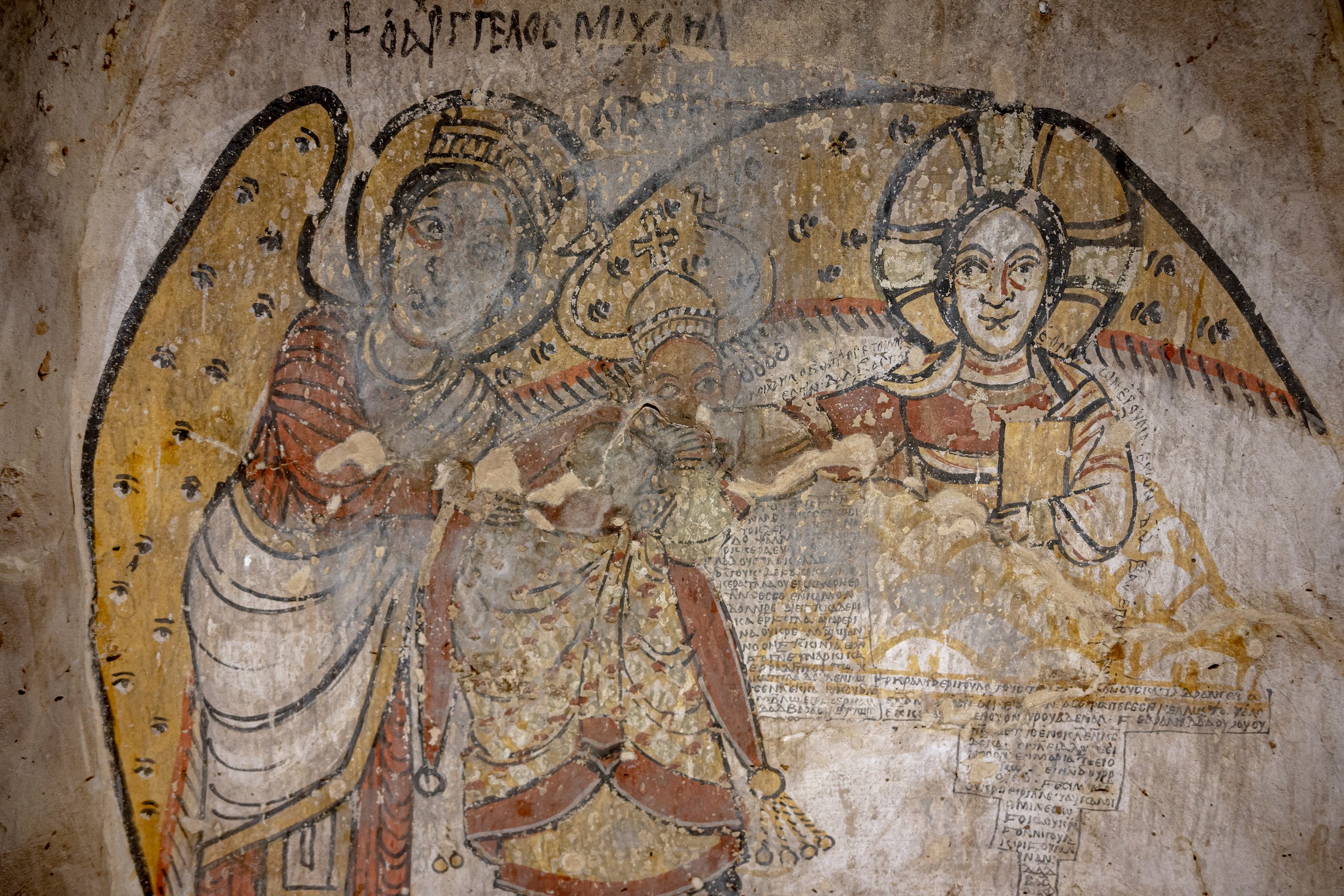
Archaeologists have uncovered a hidden complex of rooms covered with Christian paintings in Old Dongola, a deserted town in Sudan that was once the capital of medieval Makuria.
A team from the Polish Centre of Mediterranean Archaeology had been exploring houses dating from the later Funj period, 16th to 19th century, when they stumbled upon an opening into a small chamber painted with depictions of the Mother of God, Christ, a Nubian ruler, and Archangel Michael.
Preliminary research suggests the paintings were created during a time of extreme duress for Dongola, which was an important trade city on the Nile that flourished for hundreds of years under the peaceful relations between the Muslims of Egypt and the Christians of Nubia.
Close up of King David inside the discovered vaults in Old Dongola. Photo: Magdalena Skarżyńska Skarżyńska/Polish Centre of Mediterranean Archaeology University of Warsaw.
The paintings show a Nubian ruler, believed to be King David, being shielded by Archangel Michael and are accompanied by inscriptions calling for God to protect the city—figurative scenes that the archaeologists consider “unique for Christian art.”
David’s reign marked the beginning of the end for the kingdom and his actions led to the city being sacked by the Mamluk Sultanate in 1276. Onsite archaeologists speculate that the paintings might have been made with the Mamluk army approaching or laying siege to the city. Inscriptions accompanying the paintings, according to a preliminary reading, include pleas for God’s protection.
A depiction of Mary, Mother of God in Dongola. Photo: Magdalena Skarżyńska/Polish Centre of Mediterranean Archaeology University of Warsaw.
Close up of scene with King David. Photo: Magdalena Skarżyńska/Polish Centre of Mediterranean Archaeology University of Warsaw.
The chambers in Old Dongola are covered with vaults and domes built from dried brick and are more than 20 feet above the medieval ground level, a fact that has confused archaeologists. The complex is adjacent to the Great Church of Jesus, which was the most important church of the Makuria kingdom.
“I think these structures were built in exactly this place because of the presence of the Great Church of Jesus, which was the largest and most important church in Nubia according to written sources,” Artur Obłuski, the project’s director told Artnet News. “We have funding for three new projects and one is focused on the excavation of the Great Church of Jesus.”
Inside of the chamber discovered in Old Dongola. Photo: Magdalena Skarżyńska/Polish Centre of Mediterranean Archaeology University of Warsaw.
Ahead of their return in to Old Dongola in the autumn when temperatures in Sudan are cooler, the team has secured and protected the wall paintings. Polish archaeologists have been excavating the town since the 1960s, with the latest work funded by the European Research Council.
“Despite all the new and fancy methods,” Obłuski said, “archaeology still delivers surprises like this one.”